
|
|
|
|
|
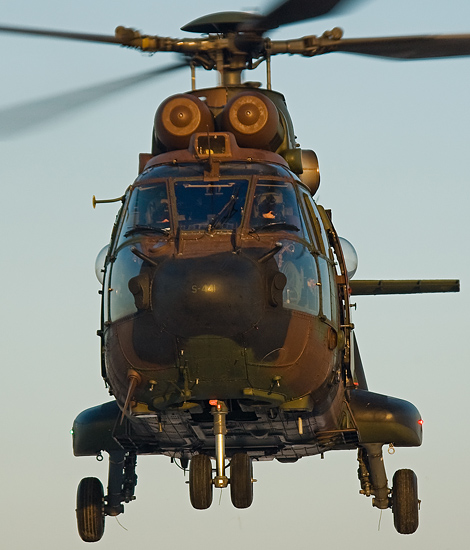
|
Winter Conditions at Gilze-Rijen; Gilze-Rijen January 14, 2010
Wintertime Photography Part 1; Text and Photograph's by Alex van Noye
On Thursday, January 14, 2010 I was a guest on Gilze-Rijen airbase. The Defense Helicopter Command of
the Dutch Air Force offered me a short visit to photograph the Helicopters in a white environment.
This is a situation which I as a photographer don't encounter every day.
The winter of the year 2010 can be noticed by the meteorological services as a winter with much
snowfall according to the Dutch Standards. The Netherlands were covered under a white blanket of
snow for a period of more than two months. This was clearly an ideal moment to do some experimental
photography with various settings of the camera. These photos will bring me a lot of variety compared
to the photos which I normally would take around this base. In this article, which consists of two
parts, I will elaborate on the techniques used in photography under these circumstances. Think of
reflections, photography with the sun at the horizon, high contrast because of the snow and the cold
weather conditions. All these factors play a major role during the winter season and you really need
to take care of this if you want to make series of sparkling pictures. We therefore need different
settings on the camera than in normal situations. Reflection can be beautiful in your photo, but it
can also dominate your photo in a wrong way. Usually reflection occurs on the canopy of the aircraft;
you can see a big white glow over the aircraft. This effect will ruin your photo. The only thing which
can reduce this effect is a polarizing filter. I am not a fan of filters on my camera; therefore I'll
try to avoid these reflections on my photographs by using the proper timing. The angle of the
incoming light of the sun on the subject is important in this case to avoid reflection.
It is a fact that the sun is much lower near the horizon during the winter than in summer. This can
bring us beautiful situations when you know how to make it visible in your photo using the correct
software. It is especially beautiful when you take pictures at the end of the afternoon. The sun is
very low at the horizon at that moment and therefore even the underside of the plane is highlighted.
The light on the plane is much more yellow than it is in normal situations. But when you get home and
you look at your pictures, you see that these images are much bluer than you experienced in
|
|
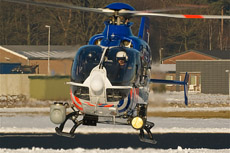
|
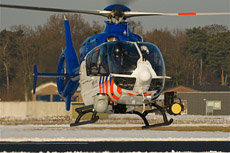
|
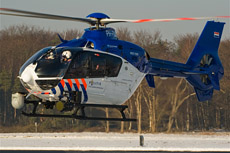
|
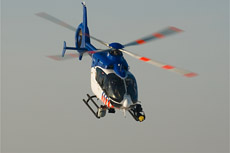
|
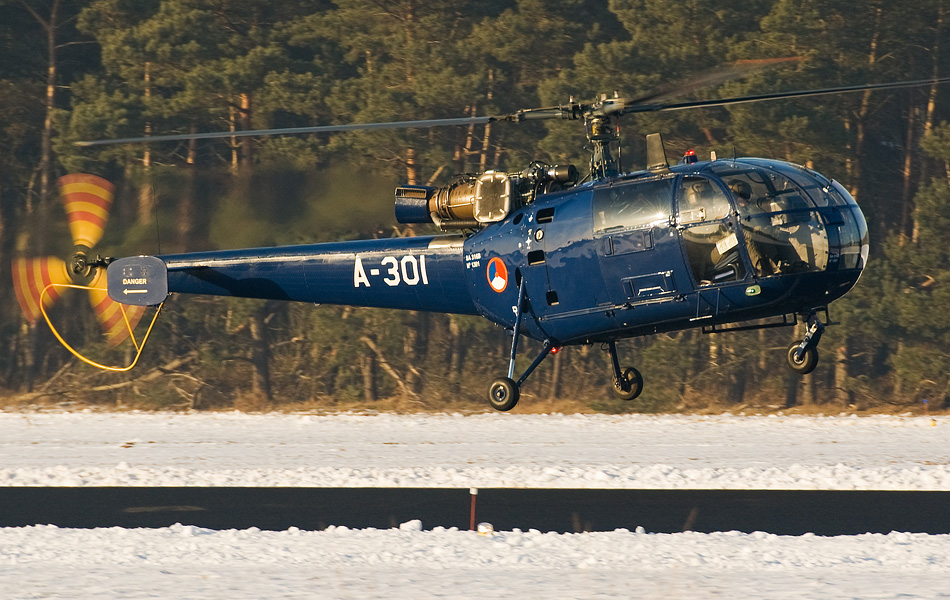
|
real-time.
Recall the yellow is easy if you have taken the picture in RAW format. It's a matter of correcting the
white balance of the photo. The idea behind white balance is to correct the colors in the picture to
the light conditions in which the photograph was taken. Not all types of light provide the same type
of color distribution in the light spectrum. People do not always see this because our brains
automatically compensate for different colors. We know for example that a sheet of white paper is
white and therefore we see it as white because our brains correct for it. A camera is much more
sensitive for different light conditions than our own eyes. It may happen that we see white
fluorescent light and the camera shows a blue haze on the picture. Incandescent lamps produce light
in mostly the red and yellow part of the light spectrum and therefore you see yellow or orange light
if your picture was taken without a flash. With the white balance you correct the white parts in the
photograph with respect to real white; we call this the neutral color of an object.
At the beginning of the afternoon I had to report myself at the main gate of the airbase. There was
already a group of about 25 people waiting when I arrived. After the usual passport control we were
transported by bus to the base and we were positioned halfway the main runway. Unfortunately, today I would proceed
with a camera of lower quality because my Canon EOS30D died in an earlier incident this year. I had to
wait for a few weeks to get my new camera. Until then I had to work with my good old Pentax istDL. As
a starter we got a helicopter of the Korps Landelijke Politiediensten (KLPD) in front of our lenses.
This was an EC135 which entered service a few months ago to replace the outdated Bo-105 Bolkow for
the police. The pilot of this helicopter came very close to us and it hovered above the snowy grass
right in front of our lenses. Normally I'm not a photographer of civil aviation, but I could not skip
this beautiful situation. When
the police helicopter had left an Allouette III of the No 300 Squadron began to fly circuits above
the runway. This resulted in some nice pictures.
It became silent at the airbase after the Allouette III had stopped his training circuits. It took
more than
one hour before the next movement took place. A Chinook of no 298 Squadron was returning from Deelen
and the pilot brought his machine into a hover in front of us. The helicopter which arrived was the
D-665. The sun was now very low at the horizon, because it was already half past three. The yellow
light on this green machine was awesome. The Chinook rolled over on its back wheels over the main
runway. Shortly after that the helicopter went back and turned his nose at us. This helicopter was
also hovering above the grass on a very short distance from us and it turned completely around its
axis. The Chinook disappeared back to his platform after a greeting from the loadmaster who was
sitting at the back of the helicopter. Our visit was over but we heard a Cougar of no 300 Squadron
which came in for landing. After a brief consultation with our guide we decided to stay until this
machine was arrived. The sun was now really low at the horizon so that the yellow light slowly became
orange. The pilot of the Cougar knew exactly what we wanted, because he also turned his helicopter
into a hover in front of our lenses. Our visit to
Gilze-Rijen came to an end when the Cougar flew away.
After this cold but wonderful visit, I could leave the base again with a beautiful series of
photographs on my camera. There wasn't as much activity on the base as during our previous visit
here in August 2009. But the special circumstances made it more than a successful visit for me and
a unique series of photographs has been obtained. The results of the photos are stunning despite
that I have made this series of photographs with my old camera. I took more pictures in the snow
after this great base visit. The next trip is about photographing the Dutch F-16 fleet at Volkel
airbase in part two of Wintertime Photography.
|
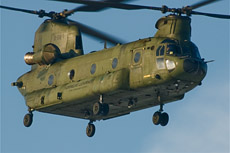
|
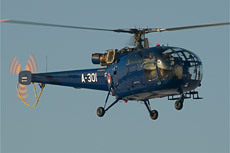
|
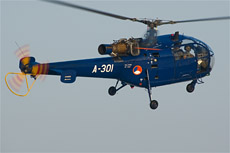
|
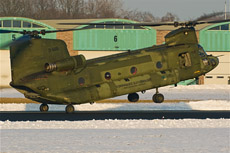
|
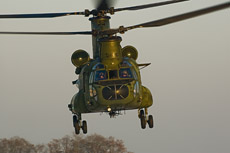
|
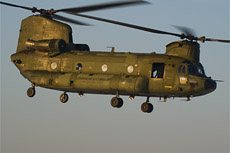
|
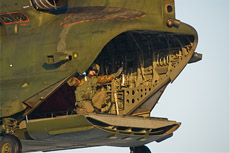
|
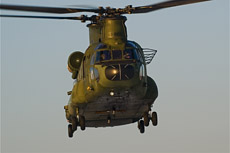
|
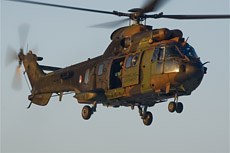
|
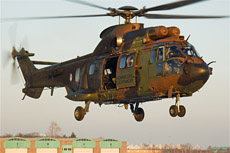
|
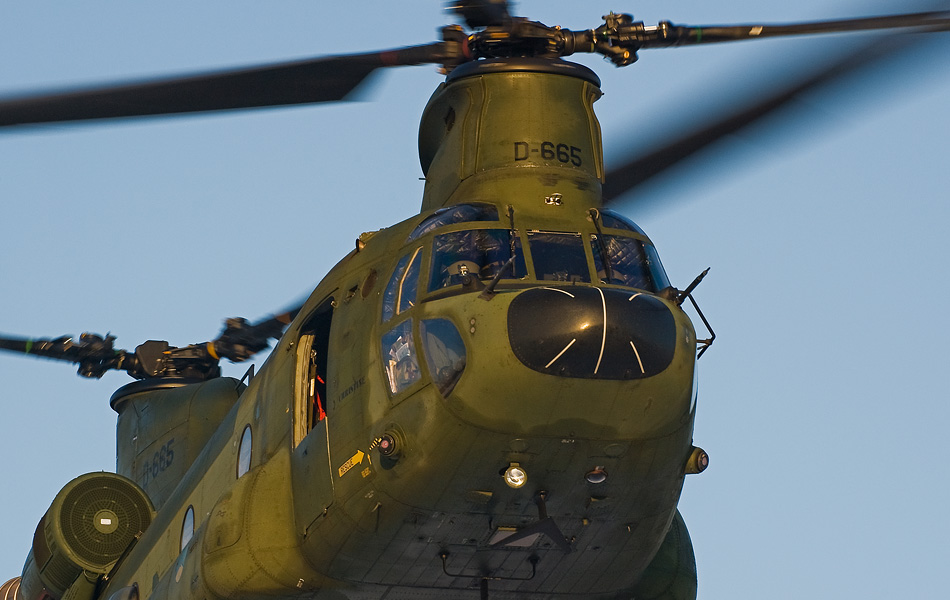
|
|
|

|







